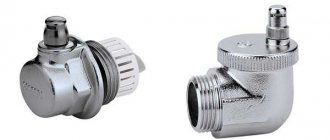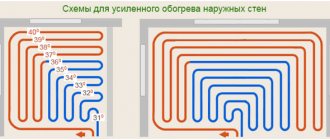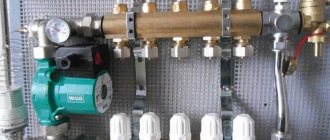Even in the coziest and most modern apartment it is impossible to feel comfortable if the room is cold. Therefore, the first priority should be to ensure an efficient heating system. Heating should provide the most pleasant microclimate possible, since too high temperatures are even worse than cold. To avoid such extremes, engineers created a simple, but functional and practical device. This is a bypass valve. People far from the heater may not know about the existence of such a device. Let's find out what it is, why and how it works.
Purpose
The main function of the bypass valve is to return excess water to the riser from the radiators when a manual or automatic regulator measures the volume of coolant. The latter, with the help of this valve, moves parallel to the control and shut-off valves.
If heating systems did not have this device, repairing radiators would be impossible while the system was operating. Valves simplify filling and emptying processes.
In addition, installing a bypass for heating ensures reliable operation of the equipment in the absence of electricity in the network. In the event of a power failure, the bypass closes the valves supplying coolant to the pump. And on the main pipe the central valve is turned off. By using a bypass, there is no need to manually tighten the taps. With this device everything will happen automatically. This is a huge plus, users say.
Principle of operation
The operating principle of a bypass valve in a gate structure is based on the counteraction of spring and water pressure. The compressed spring presses on the valve on one side, and the working medium with great force on the other. The pressures of the combined components of the structure hold the bypass in the closed position. As soon as one of the potentials exceeds the permissible pressure (1.5 -2 times), it opens completely.
The degree of opening of the valve depends on the force of the working medium pressing on the valve. The damper creates the setting pressure using a spring. The level of compression affects the pressure drop of the system.
For reference! Bypass valves have low accuracy in maintaining pressure in heating devices.
Operating principle
Most often, single-pipe heating systems are installed in apartments. In such systems, the heat generated by the first radiator affects the operation of the next one. This is true for both vertical and horizontal layouts. If there is no bypass, the batteries will be connected in series. As a result, the first battery will absorb all the heat, and the rest, at best, will receive hot or even completely cold coolant.
To prevent this from happening, the supply and return pipes near each radiator are connected by a jumper, which directs part of the water bypassing the battery. The principle of operation of the bypass valve is to provide the same amount of heat to the near and far radiators and reduce their dependence on each other.
What is a bypass valve
Bypass placement
Bypass is a mechanism connecting the components of the heating system in the forward and reverse directions and its bypass part.
In hydraulics, the part serves to facilitate repair and cleaning work in case of failure of heating structures, increases the safety of heat supply and the performance of pipe (shut-off) valves.
Varieties
Bypasses are used in a wide variety of heating systems. There are two main types: with and without a check valve:
- Valveless bypasses allow you to repair part of the system without turning off the entire heating.
- The former are used with circulation pumps. Involve them if necessary. When the pump is running, the valve turns on and opens, then the coolant flows under the pressure created by the pump.
This device can perform different functions and be used in different ways. Below we will look at what the bypass valve is responsible for in different heating system designs.
Examination
There are several methods to check the tightness of the bypass. All of them are used on the valve removed from the car. Without dismantling, only computer diagnostics by service station specialists can indicate possible valve malfunctions.
First method
- connect the vacuum tube to the thinnest outlet and create a vacuum of air, you can just use your mouth. Look inside the valve - inside you will see how the piston moves and a gap opens for air to pass through. If this does not happen, the valve is damaged. You can also blow into the same outlet - it should not be blown through. If it is blowing, it needs to be changed.
Likewise, the side fitting, which is located perpendicular to the thinnest outlet, should not be blown. Although here, for a correct check, you need to apply strong pressure equal to the pressure pumped by the turbine, which is not always possible at home. Also, air tightness must be maintained on the side of the outlet fitting, which is located opposite the thinnest one.
The process of checking the bypass using the first method
Second method
- press the spring with your finger, which pushes the diaphragm. Then firmly clamp the thinnest outlet through which the air vacuum is created. Remove your finger from the spring - in a working bypass it will not expand, because a vacuum has been created in the valve, which holds it. If the spring still expands, there is no tightness in the valve or its membrane and it is no longer working. In a working bypass, the spring will snap into place with a characteristic click only after you remove your finger from the thinnest outlet, thus resuming the air flow.
Third method
Only suitable for solenoid controlled valves. To do this you will need a VAG-COM diagnostic adapter. By running the test of the corresponding performers (4th), voltage will be applied to the sensor and it will click, which is noticeable by ear. All test results can be supplemented by measuring turbine pressure.
Bypass in single-pipe heating
In heating systems, this device helps to generate alternative heat flows, bypassing the heating network and components. In multi-storey buildings, the valve will help in the process of repairing the battery in winter. By redirecting the flow, you can easily replace or repair a structural part of the system. The device can be installed in any part of the heating network.
In addition, in single-pipe systems, heat dissipation is controlled by a bypass valve. The main function is to remove excess coolant in the riser when the thermostat changes the volume of coolant. Another function is to speed up the filling and emptying of the system, even if manual valves are not installed.
In the event of a temporary power outage in systems with a circulation pump, installing a heating bypass ensures uninterrupted operation. Thanks to the control valve, the system will operate in natural mode.
Single-pipe heating is often improved with these devices. The use of a bypass road is relevant in old houses built in the USSR. These houses are already obsolete and in winter the apartments can get very hot. This valve is used to optimize the temperature regime. After installation, you can regulate the coolant flow.
It works like this. Water enters the system from the boiler room or central heating boiler room sequentially, but through the use of a bypass, bypassing the radiators. When it completes its circle, it will return to the cauldron. Due to heat transfer, the temperature of the liquid drops significantly, and thus the coolant enters the radiators.
How to install the system
It is advisable to install bypasses simultaneously with the installation of the heating system. Sometimes such a device needs to be installed in an existing heating system. The most preferable installation season in the latter case is the warm seasons, since during such periods the heating system is not operated. It should be remembered that when carrying out installation work, the liquid must be drained from the pipeline.
https://youtube.com/watch?v=WBFqxw11N04
It should be noted that the work itself and the complexity of its implementation are directly dependent on the materials from which the pipeline is made, as well as the heating circuit itself. The simplest work will be with metal-plastic. And polypropylene or metal requires the use of welding devices. That is, you won’t be able to install it yourself; you will need the help of specialists.
When installing yourself, you need to remember that first of all attention is paid to the section of the bypass route, which is installed parallel to the return
It is important not to forget to install the shut-off valves as well. You also need to be careful about the sides of the pipe - it’s better not to confuse them.
You also need to be careful about the sides of the pipe - it’s better not to confuse them.
So, a bypass is an important and useful device that can be helpful in many situations, so it is better not to neglect its installation.
Installation
Having studied what a bypass valve is in heating, you should find out the features of the installation. When installing, it is necessary to take into account some factors that affect the efficiency of the heating system.
Therefore, the valve diameter must be smaller than the size of the heating pipe. The temperature at the bypass points should be as low as possible. The device should be as close to the battery as possible and, conversely, removed from the riser. Installing the bypass valve horizontally prevents air from entering the system. For quick dismantling, the bypass must have locking elements.
Technical specifications
The technical characteristics of bypass units are indicated by letter symbols and are regulated by GOST (No. 26349-84; 28338-89). The marks are deciphered as follows:
- “DN” is the typical size of the hole in the connecting pipes. The diameter of the connecting tube may vary slightly (smaller or larger). GOST regulates the nominal volume of the pipe with the letter designation “Du” (conventional passages).
- “KVS” is the bypass capacity, expressed as a ratio. The marking corresponds to the flow rate of liquid, with a temperature of 20 °C, passing through the hydraulic device per hour and a volume equal to 1 meter per cube. The valve pressure loss cannot be more than 1 bar. This value is used to calculate the water pressure loss.
- “PN” - indicates the nominal and maximum bypass pressure, at a working fluid temperature of 20°C. The indicator indicates the relationship between temperature and pressure for safe and long-term operation of heating equipment. The guest designation “PN” (nominal pressure) is “Ru” (conditional pressure).
- “Setting range” is the pressure difference maintained by the setpoint force (spring) installed in the bypass valve - by the manufacturer.
Installation with circulation pump
If you need to install a circulation pump, you will need to provide a filter.
Depending on the type of pump, a suitable bypass is selected. In the case of a pump that has contact between the rotor and the coolant, a bypass is installed on the return and supply lines. When the pump rotor is not in contact with water, the bypass is placed only on the return pipeline.











